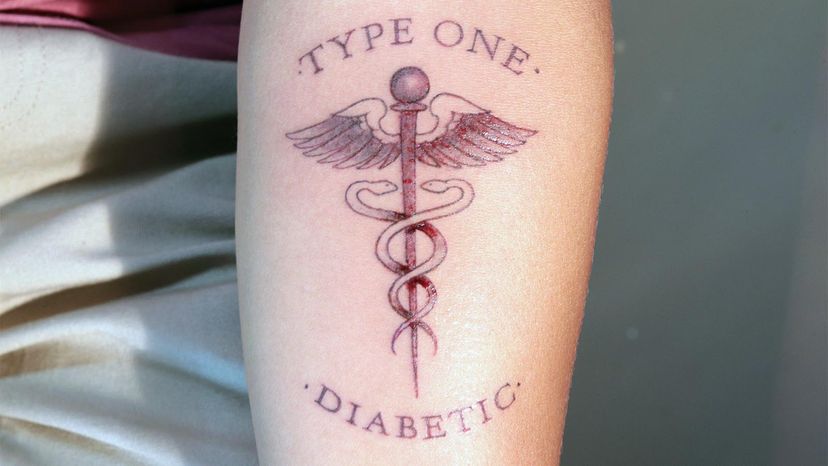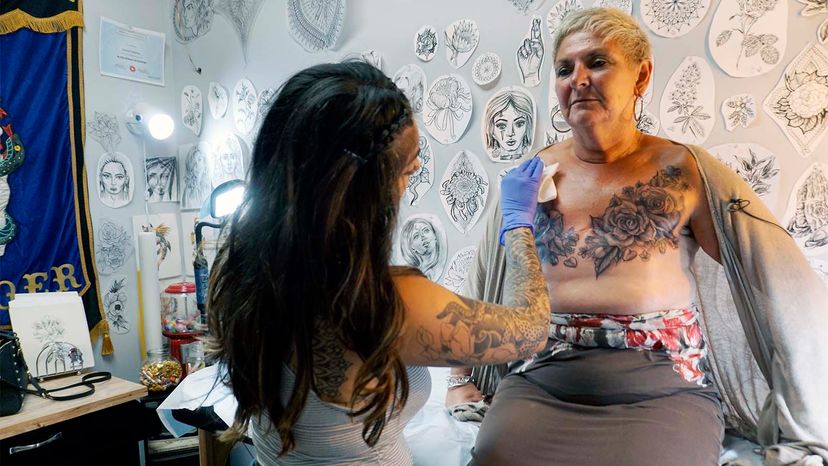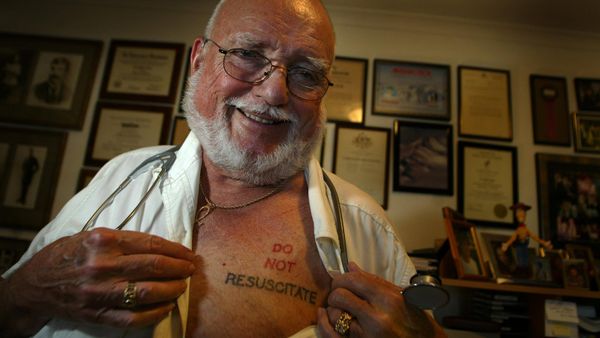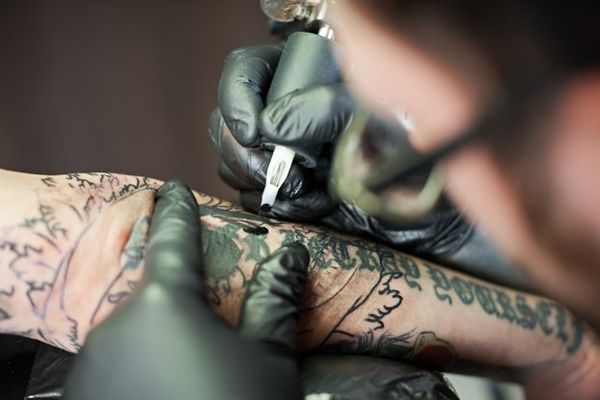
Tattoos are certainly nothing new. The earliest evidence of humans adorning their bodies with tattoos can be dated back thousands of years. Several female Egyptian mummies dated to around 2000 B.C.E. were adorned with tattoos, and the Iceman discovered on the border of Austria and Italy in 1991 also had tattoos. He was carbon-dated to be around 5,200 years old, according to Smithsonian magazine.
People in modern times get tattoos for many reasons. A 2019 study published in the journal Current Psychology found that some (25 percent) get tattooed to mark watershed events in their lives, while others (12 percent) get inked simply to decorate their bodies. But are there other reasons someone might choose to get permanently inked? Yes, and the reason is medical.
Advertisement
Replacing Medical ID Bracelets
Typically, someone with a medical condition might wear a medical identification bracelet to provide quick health information to first responders in case of an emergency. First responders are trained to look for them on a patient's wrists and neck because they include important information like severe allergies, medications, whether the person has diabetes, Alzheimer's, etc.
But a medical tattoo can be an option for someone who wants something more permanent.
Ben Roberts, who has Type 1 diabetes, told USA Today he decided to have the words "Diabetic, Type 1" tattooed on his arm after he'd spent more than $1,000 on medical bracelets. Ed Friedlander, a board-certified anatomic and clinical pathologist at William Carey College of Osteopathic Medicine, had "No CPR" tattooed on his chest to convey his wishes that he receive no life-saving measures should his heart stop.
However, paramedics and many medical professionals urge caution before making the switch.
Because there are still no guidelines regarding medical tattoos from the American Medical Association, paramedics and hospitals technically have no legal obligation to follow their instructions. If the tattoos aren't on the wrist or are enhanced with a design, medical professionals may not even be able to locate them, rendering them useless. Also, the permanency of tattoos becomes problematic when medical information changes. On the other hand, in an emergency situation, paramedics look for any information that can help them aid a patient, and a tattoo certainly can assist them.
Radiation Marks
Replacing a medical bracelet isn't the only reason for getting a medical tattoo. When patients undergo radiation treatment for cancer, the radiologist may need to give them several tiny tattoos — they're about the size of a freckle. These tattoos are used to pinpoint the exact area for treatment.
Patients typically end up with between one and four radiation tattoos, but it depends on the case, so some people may have more. These tattoos are permanent, just like any others, and are made with ink and a needle. Often, though, they leave behind a painful reminder of the cancer the radiation treated. So many people opt to have them removed. And members of the American Society for Laser Medicine and Surgery (ASLMS) will remove them for free for cancer survivors.

Reconstructive Procedures
Finally, a booming area for medical tattoos is cosmetic-related, and includes plastic and reconstructive surgeries to conceal scars, severe lacerations or burns, or to address skin conditions like vitiligo or even baldness.
For instance, when someone has a mastectomy, the nipples of the breasts are often removed, too. In many cases, patients choose to have surgery to have them reconstructed — and have the areolas tattooed afterward so they appear dark around the new nipples. Breastcancer.org says there are now experienced nipple tattoo artists who can create very realistic 3D nipples. These tattoos appear three-dimensional but are flat on the breast. More women are choosing this route instead of nipple reconstruction surgery because it heals quicker and doesn't add more scars.
Other patients who don't have reconstructive surgery simply choose to have large tattoos on their chests. The tattoos create an entirely new body image and can help erase the long-lasting scars — both physical and psychological — left behind from the surgery and cancer.
A 2021 study published in the journal Plastic and Reconstructive Surgery found that medical tattooing in these instances — for plastic and reconstructive surgery — had very high outcomes for patients. But the authors said there should be an established approach to training and a standardized curriculum for the medical tattoo community to "protect the public and to ensure the highest quality service."
Advertisement


